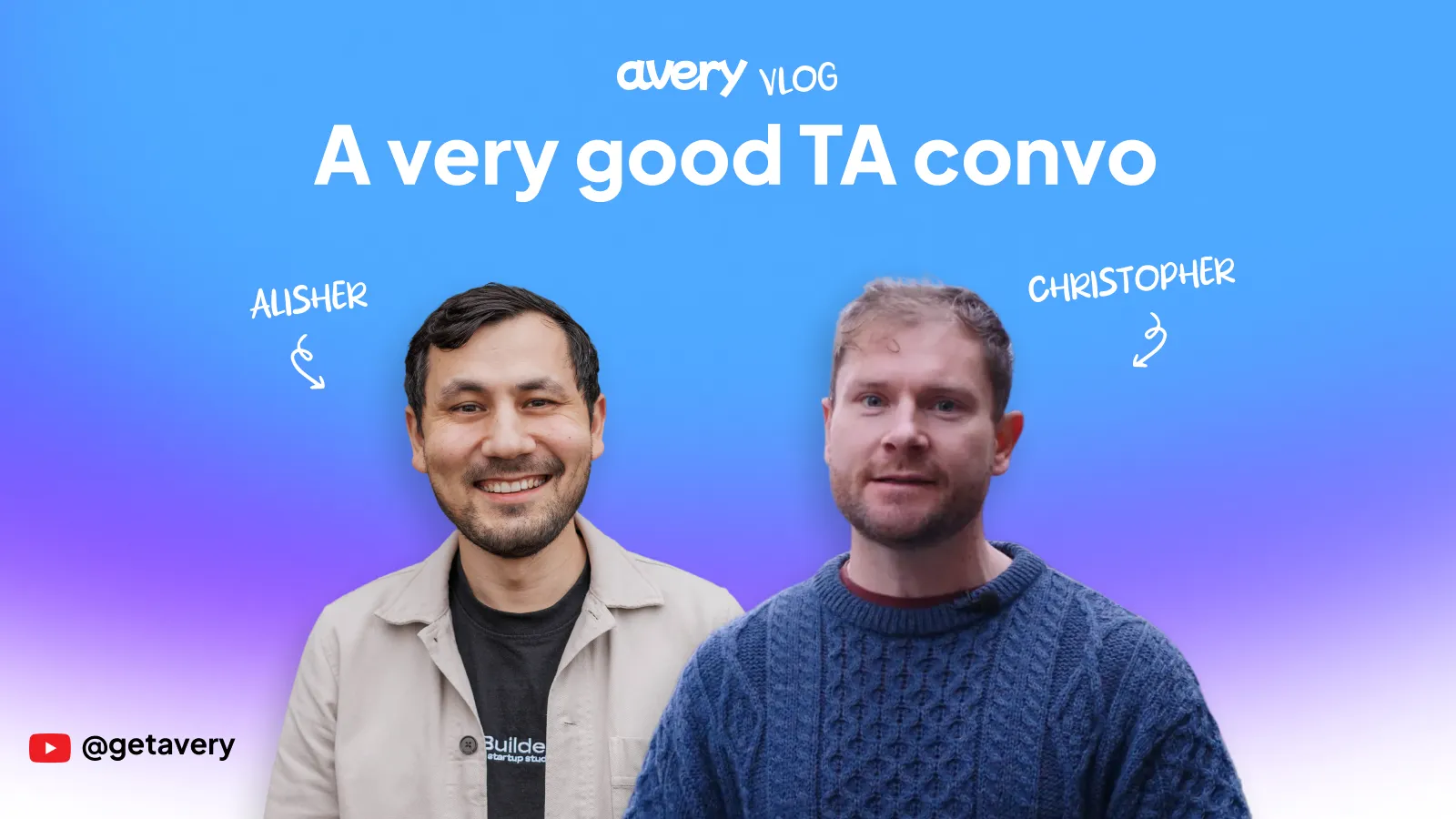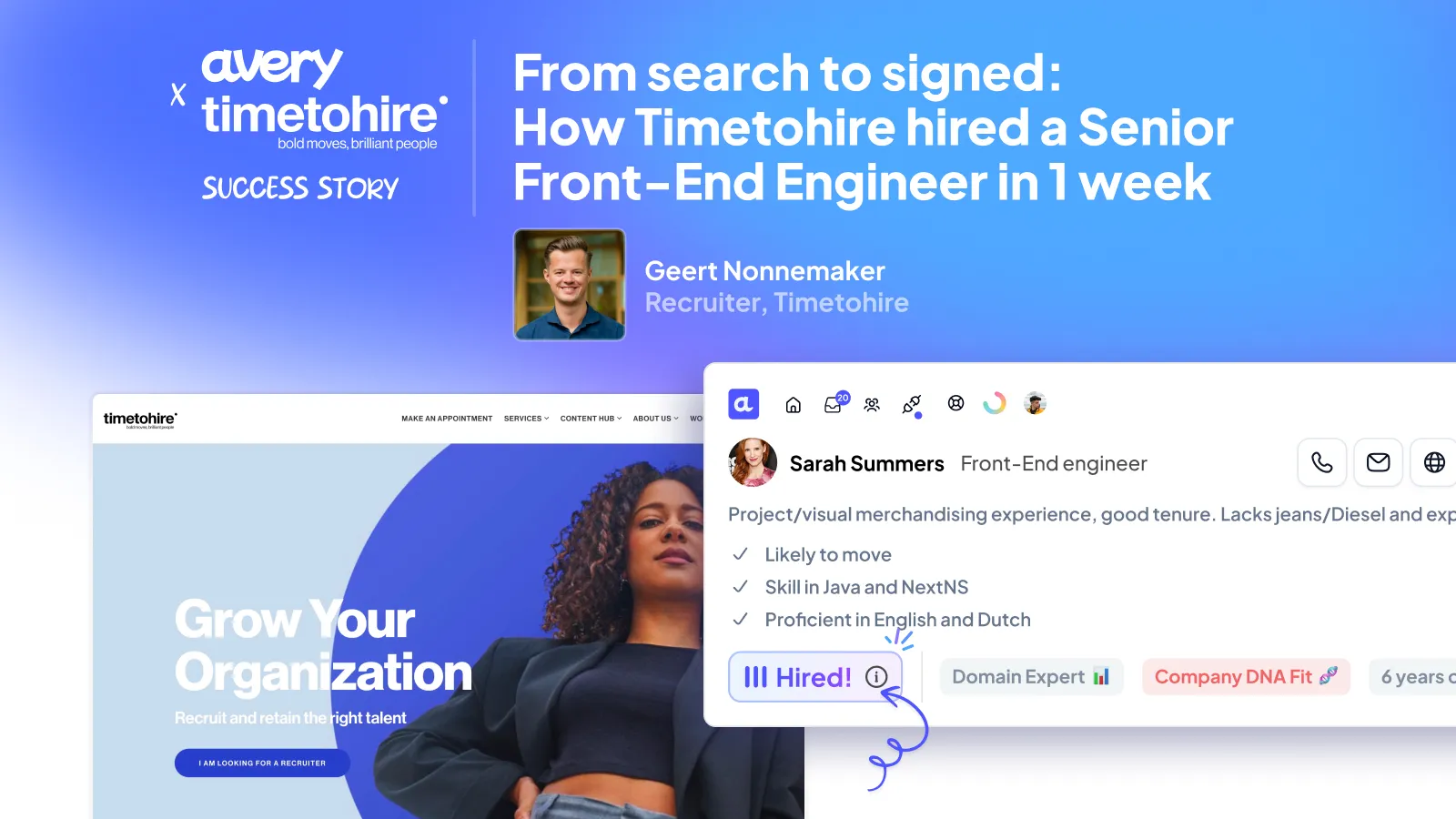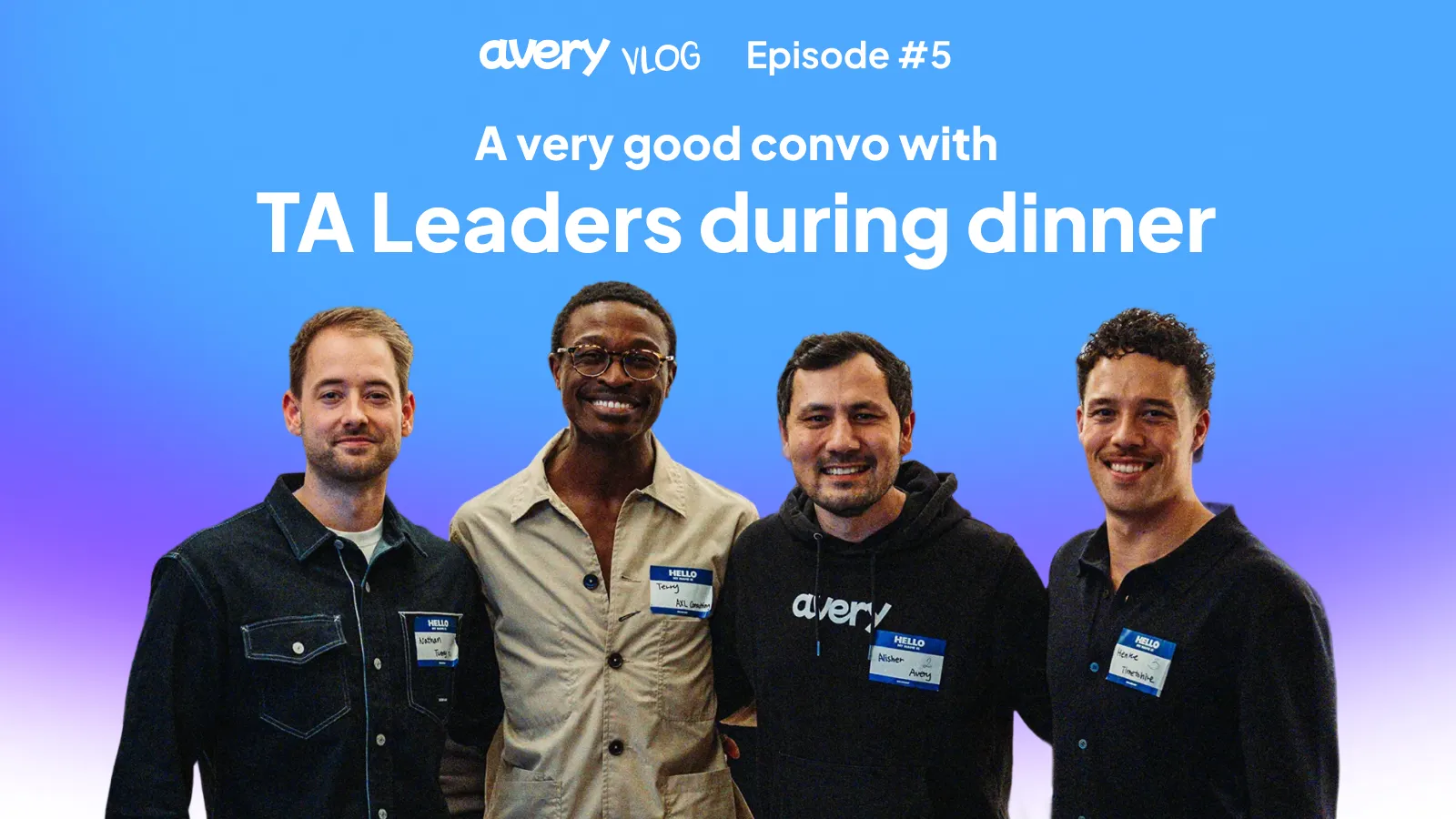Beyond handoffs: Building collaborative frameworks between Recruiters and Hiring Managers
Article created in collaboration with Renita Käsper from Cohorts
.avif)
Most organizations still operate with outdated models where recruiters and hiring managers function in isolated silos. Yet companies with strong recruiter-hiring manager collaboration see 40% faster time-to-hire and 25% higher quality of hire scores.
As Renita Käsper, Global Talent Acquisition & Employer Branding Expert, observes:
“We often assume that people, especially senior leaders, naturally know how to hire well. But hiring is a skill, not a title.”
The 3 critical pain points destroying collaboration
Based on extensive experience building hiring frameworks across organizations, Käsper identifies three key issues undermining recruiter-hiring manager partnerships:
.avif)
1. Hiring Managers not fully owning their role
“Many hiring managers still treat recruitment as something that should just happen, expecting great candidates and fast results, with minimal input,”
explains Käsper.
“The most common excuse? 'I don't have time.'”
This creates a cascade of problems: delayed intake meetings, rescheduled interviews, and unclear decisions.
2. Recruiting treated as an add-on, not core leadership
“Hiring is one of the most important parts of a people leader's role, but it's still treated as 'extra',” notes Käsper.
“Most hiring managers are not evaluated on their hiring impact. But hiring outcomes are shared outcomes.”
3. Recruiters not seen as strategic partners
When hiring managers view recruiters as “CV pushers” instead of trusted advisors, collaboration breaks down, and opportunities to improve hiring outcomes are missed.
The "License to Hire" solution
Käsper developed the License to Hire program on a simple principle:
“Everybody who is hiring is a part of the hiring team. We don't invest nearly enough in educating, equipping, and empowering our hiring teams.”
.avif)
Key practices include:
- Involving all stakeholders from the start
- Mandatory License to Hire training before opening roles
- Embedding hiring training in leadership onboarding
“Hiring is not an add-on, it's a core leadership skill.”
Essential training areas
To build capability across the team, training focuses on:
- Structured intake meetings
- Behavioral and SMART interviewing
- Representing the employer brand at every touchpoint
- Leading effective hiring debriefs
- Using ATS tools and feedback systems effectively
Building structured collaboration frameworks
Proper preparation
“A structured and well-prepared intake meeting is non-negotiable,” says Käsper.
The foundation includes:
- Market insights from the talent team
- Clear role requirements from hiring managers
- Aligned timelines and responsibilities
- Defined feedback loops
“In my experience, most broken recruitment processes can be traced back to one thing: they never had a proper beginning.”
Continuous feedback integration
“Process and technology — one doesn't work without the other.”
Key practices:
- Post-interview analytics (e.g. “Hiring Manager spoke 85% of the time”)
- Retrospectives after each hire
- Regular structured alignment meetings
.avif)
Creating accountability and measurement
Shared metrics
“Time-to-hire, quality of hire, candidate experience… these should be shared, tracked, and discussed openly. They should be visible not just to the Talent team, but to all leaders, and included in regular leadership reviews.”
Metrics are made visible across leadership reviews, not siloed in the TA team.
Leadership commitment
“Leaders must champion the message that hiring top talent is one of the most important parts of a manager's role.”
Steps include:
- Hiring KPIs in all-hands
- Manager evaluation on hiring impact
- Requiring license completion
- Ongoing internal comms around hiring as a priority
Technology as an enabler
Modern tools support collaboration:
- Microlearning platforms for training
- AI note-takers and structured interview tools
- ATS-integrated scorecards
- Automated feedback loops
“Use microlearning, videos, quizzes… everyone should know where to find the materials and actually want to use them.”
Implementation roadmap
- Secure leadership commitment
- Build collaborative training
- Implement structured intake
- Share metrics
- Establish feedback loops
- Reinforce and update consistently
The strategic impact
As Käsper concludes:
“To build a strong hiring culture, we need to create a clear hiring system. Hiring is not just the recruiter's job, it's a key part of every people manager's role.”
Organizations that invest in this kind of collaboration move beyond transactional handoffs to strategic partnerships — improving both hiring outcomes and candidate experience.

“Make it clear, make it consistent, make it visible and support it with the right tools.”
Disclaimer
At Avery, we’re working hard to help tackle exactly these kinds of hiring challenges strengthening collaboration between recruiters and hiring managers. It’s a focus at Avery and one we’re constantly refining.



